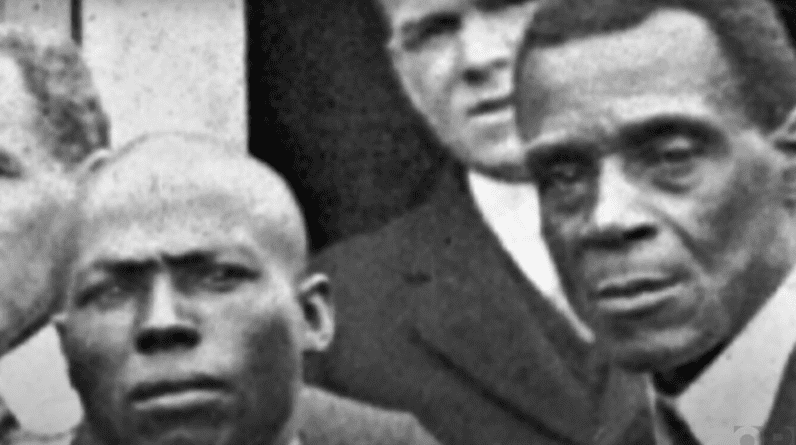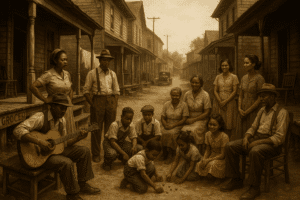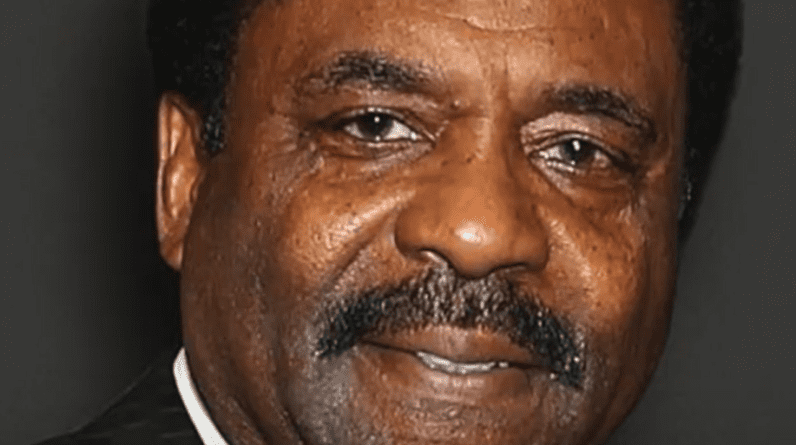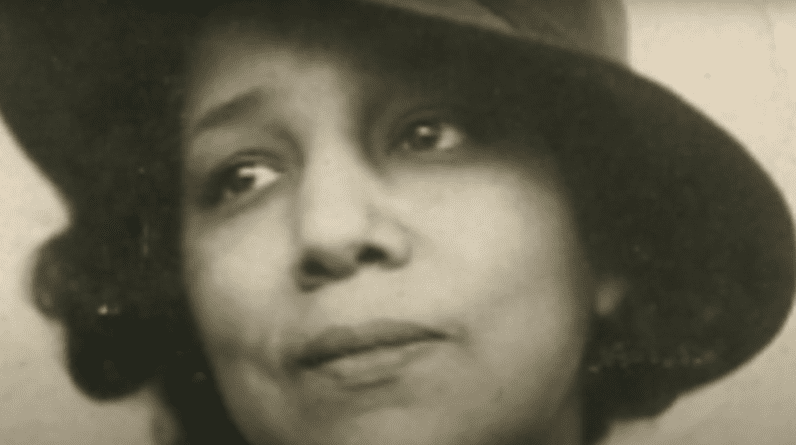
African American Life in the 1930s
African American Life in the 1930s. Step back in time and explore the fascinating world of African American life in the 1930s. This captivating article delves into the struggles and resilience of African Americans during this era, shedding light on the challenges they faced and the remarkable strength they exhibited. From the cultural achievements to the ongoing fight for civil rights, this glimpse into history will both educate and inspire you. Discover the untold stories and triumphs of African Americans in the 1930s – a period forever etched in the annals of American history.
Racial Segregation
Jim Crow Laws
In the 1930s, racial segregation was a prominent feature of African American life in the United States. The implementation of Jim Crow laws further reinforced segregation, making it legally enforced in many states. These laws mandated the separation of African Americans and white Americans in various public spaces, including schools, restaurants, bathrooms, and transportation. The Jim Crow laws perpetuated racial discrimination and created a divided society.
Segregated Facilities
Segregated facilities were another significant aspect of African American life in the 1930s. African Americans were often denied access to white-only establishments and were forced to use separate, inferior facilities designated for “colored” individuals. This segregation extended to public parks, libraries, theaters, and even hospitals. The existence of segregated facilities limited African Americans’ opportunities for social interaction and reinforced the unequal treatment they experienced.
Restricted Job Opportunities
Restricted job opportunities were a harsh reality for African Americans during the 1930s. Racial discrimination prevented many African Americans from securing stable employment and limited their access to higher-paying jobs. African Americans were often confined to low-paying jobs with minimal job security, such as domestic work, manual labor, or farm work. The limited employment options available to African Americans reinforced economic inequalities and hindered upward mobility within society.
Social and Economic Challenges
Great Depression Impact
The Great Depression of the 1930s had a devastating impact on African American communities. African Americans experienced higher rates of poverty and unemployment compared to their white counterparts. The collapse of the economy disproportionately affected African Americans, as they were often the first to be let go from their jobs and faced severe financial hardships. The Great Depression exacerbated the existing economic inequalities and deepened the social challenges faced by African Americans.
Poverty and Unemployment
Poverty and unemployment were prevalent among African Americans during the 1930s. Many African American families struggled to meet their basic needs, as they were often denied access to stable employment and faced discriminatory hiring practices. The lack of job opportunities pushed numerous African Americans into poverty, making it difficult to provide for their families and maintain a decent standard of living. The combination of poverty and unemployment created immense hardships for African American communities during this period.
Discrimination in Housing and Education
Discrimination in housing and education further compounded the social and economic challenges faced by African Americans in the 1930s. African Americans were frequently subjected to housing discrimination, with many being denied access to decent and affordable housing in predominantly white neighborhoods. This segregation in housing perpetuated the racial divide and limited African Americans’ access to quality living conditions. Similarly, discriminatory practices in education denied African American children equal educational opportunities, reinforcing educational disparities and hindering their chances of academic and professional success.

Political Activism
The New Deal and African Americans
The New Deal policies of President Franklin D. Roosevelt’s administration had a significant impact on African Americans. The New Deal aimed to alleviate the effects of the Great Depression and implement social reform. While the New Deal programs were not specifically designed to address racial inequalities, they did help African Americans obtain relief through employment opportunities created by government initiatives. Programs such as the Works Progress Administration (WPA) provided jobs and allowed some African Americans to gain economic stability during this challenging time.
The National Association for the Advancement of Colored People (NAACP) played a crucial role in advocating for civil rights during the 1930s. The NAACP fought against racial discrimination and worked towards ensuring equal rights and opportunities for African Americans. Through legal strategies and public activism, the NAACP made significant strides in challenging Jim Crow laws, fighting against lynching, and promoting equal access to education and employment. The organization became a powerful force in the civil rights movement and continues to fight for equality today.
Black Nationalism and Back-to-Africa Movement
Black nationalism emerged as an influential political ideology during the 1930s, advocating for self-determination and independence for African Americans. Proponents of black nationalism believed in the importance of African American pride, cultural unity, and the establishment of separate institutions to foster economic and social progress. The Back-to-Africa movement, led by figures such as Marcus Garvey, also gained traction during this time, promoting the idea of repatriation to Africa as a way to escape the racial oppression faced in the United States. These movements provided African Americans with alternative political and social pathways to challenge discrimination and assert their identity.
Art and Culture
The Harlem Renaissance

The Harlem Renaissance, a cultural and artistic movement centered in Harlem, New York, had a profound impact on African American life during the 1930s. This vibrant cultural movement showcased the artistic talents of African Americans in various fields, including literature, visual arts, music, and theater. The Harlem Renaissance provided a platform for African American artists to express their creativity and challenge racial stereotypes and discrimination. It celebrated African American culture and played a significant role in shaping American art and culture as a whole.
African American Literature
African American literature flourished during the 1930s, reflecting the unique experiences and perspectives of African Americans. Writers such as Langston Hughes, Zora Neale Hurston, and Richard Wright captured the social and racial realities of African Americans in their works. Through their writings, African American authors challenged stereotypes, celebrated their culture, and shed light on the struggles and resilience of their communities. African American literature became an essential tool for social and political activism, raising awareness about the injustices faced by African Americans and inspiring change.
Jazz and Popular Music
Jazz and popular music played a significant role in African American culture during the 1930s. African American musicians, such as Louis Armstrong, Duke Ellington, and Billie Holiday, showcased their talent and creativity through their music. Jazz, with its roots in African American culture, became a symbol of pride and artistic expression for the community. Popular music, including blues and gospel music, also played a crucial role in narrating the experiences and emotions of African Americans and providing solace during challenging times. African American musicians greatly influenced the development of American music and continue to shape its landscape.
Religion and Spirituality
Role of Churches
Churches played a central role in African American communities during the 1930s. These institutions provided not only spiritual guidance but also served as social and cultural gathering places. African American churches offered a sense of belonging, a space for community development, and actively participated in social justice movements. They became pivotal in organizing protests, advocating for civil rights, and supporting the overall welfare of their communities. Churches served as a pillar in African American life, offering hope and strength amidst adversity.
Influence of African Traditional Religions
African Traditional Religions also had a significant influence on African American spirituality during the 1930s. Despite the suppression of African traditions during slavery, elements of African spirituality and practices persisted and blended with Christianity. African American religious practices incorporated elements such as ancestor veneration, spiritual rituals, and the concept of divine interconnectedness. These influences enriched African American spirituality, reinforcing cultural pride and providing a source of resilience during periods of hardship.
Holiness and Pentecostal Movements
The Holiness and Pentecostal movements gained popularity within African American communities during the 1930s. These religious movements emphasized spiritual experiences, personal transformation, and the power of the Holy Spirit. The Holiness and Pentecostal movements provided African Americans with a form of religious expression that emphasized direct encounters with God and personal empowerment. These theological frameworks empowered African Americans to challenge societal norms and fostered a sense of resilience and agency within their communities.
Family Life and Community
Extended Family Networks
Extended family networks played a vital role in African American communities during the 1930s. Due to economic challenges and the lack of social support, African American families relied heavily on extended family members for assistance and guidance. These networks provided emotional and financial support, offering a safety net within the community. Extended family networks fostered a sense of unity, resilience, and resourcefulness, enabling African American families to navigate the hardships they faced during this time.
Community Support Systems
Community support systems were essential in African American life during the 1930s. Mutual aid societies, benevolent associations, and fraternal organizations were integral in providing financial assistance, medical support, and education opportunities. These support systems acted as a safety net, particularly for those who faced economic hardships and limited access to resources. They bridged the gaps in social and economic inequalities and created a sense of solidarity and collective responsibility within the African American community.
Strategies for Survival
African American communities developed various strategies for survival during the 1930s. These strategies included self-help initiatives, entrepreneurship, and community organizing. Despite facing significant challenges, African Americans displayed resilience and resourcefulness in navigating through difficult times. They created cooperative businesses, started informal economies, and established community centers to support one another. These strategies empowered African Americans to assert their agency, challenge oppressive systems, and build stronger networks of support within their communities.
Education and Intellectual Achievements
Historically Black Colleges and Universities
Historically Black Colleges and Universities (HBCUs) played a crucial role in African American higher education during the 1930s. These institutions provided African American students with educational opportunities that were otherwise denied to them at predominantly white institutions. HBCUs became centers of intellectual discourse, cultural preservation, and community empowerment. They produced notable African American scholars, educators, and leaders who challenged racial stereotypes and advocated for civil rights.
Notable African American Scholars and Educators
Despite facing numerous obstacles, African American scholars and educators made significant intellectual contributions during the 1930s. Individuals such as Mary McLeod Bethune, W.E.B. Du Bois, and Carter G. Woodson dedicated their lives to advancing education, challenging racial stereotypes, and advocating for social and political change. These intellectuals played a pivotal role in shaping African American culture, promoting intellectual discourse, and laying the foundations for future generations of African American scholars.
Intellectual Discourse and Debate
Intellectual discourse and debate were vibrant during the 1930s, as African American thinkers and scholars engaged in discussions around racial identity, social justice, and civil rights. Intellectuals such as Alain Locke, Langston Hughes, and Richard Wright explored themes of black identity, social inequality, and the African American experience in their writings. These debates fostered a sense of pride and consciousness within the African American community and contributed to the overall discourse on race relations in the United States.
Sports and Entertainment
Jackie Robinson and Baseball
The 1930s witnessed significant achievements by African American athletes in the world of sports. One notable figure is Jackie Robinson, who became the first African American to play Major League Baseball in 1947. While his breakthrough occurred after the 1930s, Robinson’s impact on racial integration in sports was undeniable. Robinson’s success challenged societal norms and provided African American athletes with greater opportunities to showcase their talents and pave the way for future generations of athletes.
Boxing Champions
Boxing became a significant sport in African American communities during the 1930s. Figures such as Joe Louis and Jack Johnson rose to prominence and achieved great success in the boxing world. These champions not only demonstrated their physical prowess but also challenged racial stereotypes and became symbols of African American resilience and determination. Boxing provided African American athletes with a platform to showcase their abilities and gain recognition in a predominantly white-dominated sport.
Blackface Minstrelsy and Stereotypes
Despite the achievements of African American athletes and entertainers, the 1930s also saw the persistence of racially offensive practices such as blackface minstrelsy. Blackface performances perpetuated racial stereotypes and mocked African American culture, reinforcing racist attitudes prevalent during this time. While African American entertainers faced numerous challenges, they also worked diligently to challenge these stereotypes and create opportunities for themselves in the entertainment industry, paving the way for future generations to assert their cultural contributions.
Healthcare and Social Services
Segregated Medical Care
Segregated medical care was a reality for African Americans in the 1930s, reflecting broader racial disparities in access to healthcare. African Americans often faced limited options when seeking medical treatment and were often denied access to white-only healthcare facilities. This segregation in medical care contributed to lower quality healthcare for African Americans and perpetuated health disparities within the community.
Community Health Initiatives
Despite the challenges of segregated medical care, African American communities developed community health initiatives to address their healthcare needs. Mutual aid societies, women’s clubs, and other community organizations banded together to provide healthcare services, health education, and support for individuals and families. These initiatives played a crucial role in filling the gaps left by segregated medical care and empowering African Americans to take control of their health and well-being.
Role of Black Nurses and Organizations
Black nurses and organizations played a significant role in providing healthcare services and advocating for equitable healthcare access during the 1930s. African American nurses provided care to their community, often in the face of discrimination and limited resources. Organizations such as the National Association of Colored Graduate Nurses (NACGN) fought for the rights and recognition of African American nurses and played a crucial role in addressing healthcare disparities. These efforts paved the way for future advancements in African American healthcare professionals and access to quality healthcare.
Migration and Urbanization
The Great Migration
The Great Migration, which occurred primarily between 1916 and 1970, saw millions of African Americans leaving the rural South and relocating to urban areas in the North and West. The migration continued into the 1930s, as African Americans sought better economic opportunities and an escape from the racial discrimination of the Jim Crow era. The Great Migration transformed the demographics and cultural dynamics of African American communities, contributing to the development of vibrant urban centers and new opportunities for social and economic advancement.
Northern Cities and African American Neighborhoods
African Americans who migrated to northern cities in the 1930s faced both challenges and opportunities. While they found new economic prospects and less overt racial oppression, they also encountered racial tensions and housing discrimination. African American neighborhoods, such as Harlem in New York City, became cultural hubs where creativity and resilience thrived. These neighborhoods offered a sense of community, cultural expression, and social activism, contributing to the shaping of African American identity in urban settings.
Impact on Identity and Opportunities
The migration and urbanization of African Americans in the 1930s had a profound impact on their identity and opportunities. Leaving behind rural areas and the limitations of the Jim Crow South, African Americans found new possibilities for themselves and their families. Urban centers provided access to education, employment, and cultural expressions that were previously denied to them. This shift contributed to the emergence of a new African American identity, one that embraced urban culture, activism, and the pursuit of equal rights and opportunities.
In conclusion, African American life in the 1930s was marked by significant social, economic, and political challenges. Racial segregation, limited job opportunities, and discrimination in various aspects of life were everyday realities. However, African Americans displayed incredible resilience and resilience, finding strength in their communities, cultural expressions, and activism. Despite the hardships they faced, African Americans made notable intellectual, artistic, and sports achievements, challenging societal norms and paving the way for progress in civil rights. Through a combination of community support, political activism, and cultural contributions, African Americans navigated through the difficulties of the era and laid the foundation for a more inclusive and equitable future.





